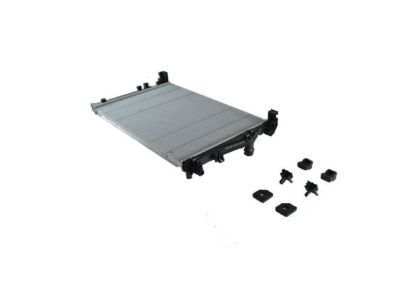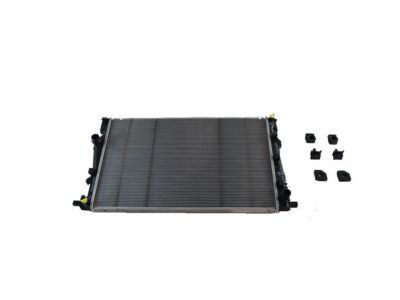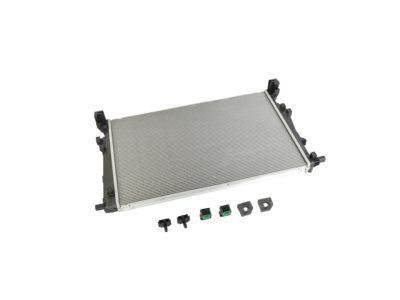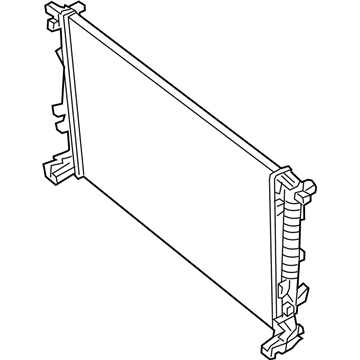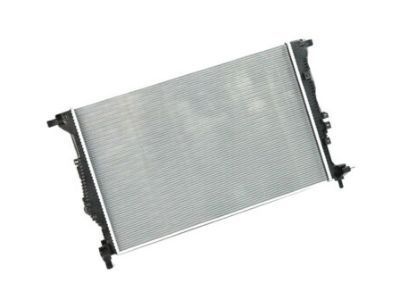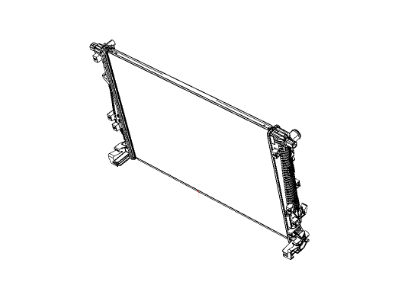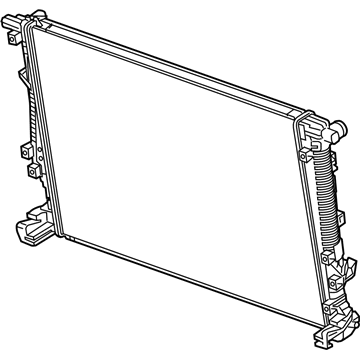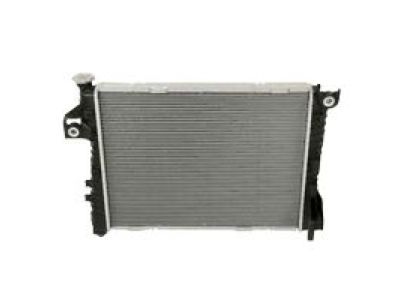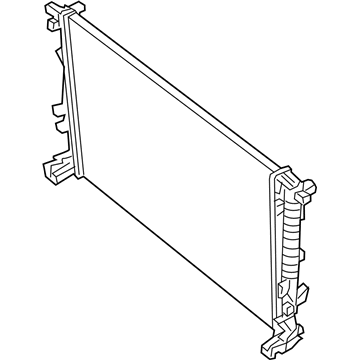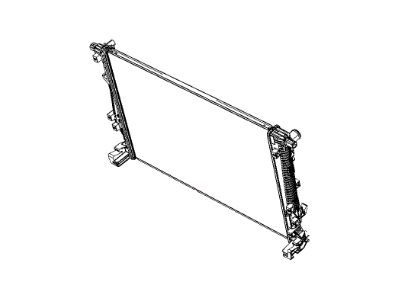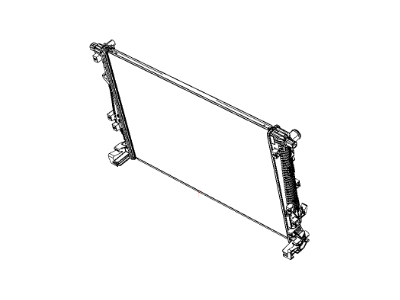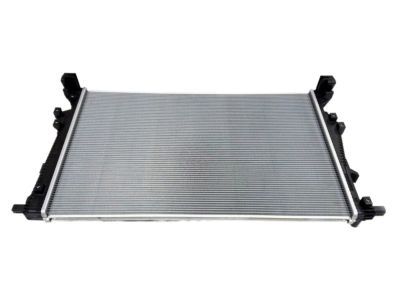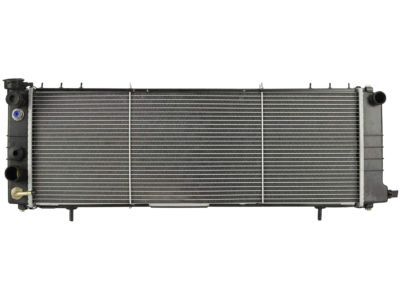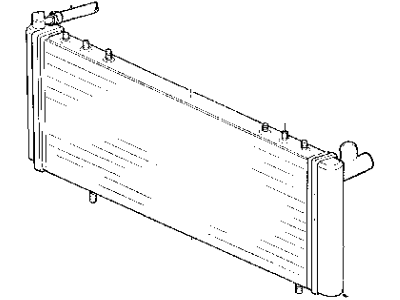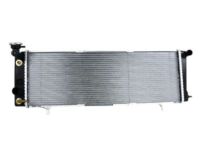
My Garage
My Account
Cart
Genuine Jeep Cherokee Radiator
Cooling Radiator- Select Vehicle by Model
- Select Vehicle by VIN
Select Vehicle by Model
orMake
Model
Year
Select Vehicle by VIN
For the most accurate results, select vehicle by your VIN (Vehicle Identification Number).
22 Radiators found

Jeep Cherokee Engine Cooling Radiator
Part Number: 68284108AA$270.95 MSRP: $406.00You Save: $135.05 (34%)
Jeep Cherokee Radiator-Engine Cooling
Part Number: 68525071AA$253.11 MSRP: $379.00You Save: $125.89 (34%)
Jeep Cherokee Engine Cooling Radiator
Part Number: 68291179AA$253.11 MSRP: $379.00You Save: $125.89 (34%)
Jeep Cherokee Engine Cooling Radiator
Part Number: 68229284AB$253.11 MSRP: $379.00You Save: $125.89 (34%)
Jeep Cherokee Engine Cooling Radiator
Part Number: 68229290AA$270.95 MSRP: $406.00You Save: $135.05 (34%)
Jeep Cherokee Engine Cooling Radiator
Part Number: 68291180AA$246.42 MSRP: $369.00You Save: $122.58 (34%)
Jeep Cherokee Engine Cooling Radiator
Part Number: 68291177AA$280.98 MSRP: $421.00You Save: $140.02 (34%)
Jeep Cherokee Engine Cooling Radiator
Part Number: 68229290AC$270.95 MSRP: $406.00You Save: $135.05 (34%)
Jeep Cherokee Engine Cooling Radiator
Part Number: 68291178AA$263.14 MSRP: $394.00You Save: $130.86 (34%)Jeep Cherokee Engine Cooling Radiator
Part Number: 68197299AB$240.26 MSRP: $355.00You Save: $114.74 (33%)Jeep Cherokee Engine Cooling Radiator
Part Number: 68229290AB$270.95 MSRP: $406.00You Save: $135.05 (34%)
Jeep Cherokee Engine Cooling Radiator
Part Number: 68197299AC$240.26 MSRP: $355.00You Save: $114.74 (33%)

| Page 1 of 2 |Next >
1-20 of 22 Results
Jeep Cherokee Radiator
The Radiaor in Jeep Cherokee vehicles is one of the key parts of the entire cooling system, its primary function is to avoid engine overheating. Located at the front of the vehicle above the engine, it consists of tubes and fins through which the coolant is passed so as to be cooled by air. It is installed in a way that it can easily draw fresh air while the front grille serves to safeguard the Radiator and any obstructions. Typical problems that are characteristic of Jeep Cherokee radiators include leakages and crackling that stem from negligence, mechanical pressures, and accidents. Cleaning and inspection of the radiator should be done continually in an effort to elongate the life of the equipment as well ensure that it is working efficiently. Altogether, the radiator plays an important role of a heat exchanger in order to ensure proper running of the engine as well as its durability.
Looking for affordable and high-quality auto parts? Then you have already arrived at the proper online shop. We offer all Jeep Cherokee Radiator at great affordable prices. Moreover, all genuine Jeep Cherokee Radiator come with a manufacturer's warranty. In the long run, you would realize you have saved a lot of trouble and money with OEM parts from here.
Jeep Cherokee Radiator Parts Questions & Experts Answers
- Q: How to remove and install a radiator on a Jeep Cherokee?A:On 1999 and later models a special tool is needed to remove the transmission cooler lines from the radiator. Disconnect the negative battery cable from the battery. Drain the cooling system. If the coolant is relatively new or in good condition, save it and reuse it. Loosen the hose clamps, then detach the radiator hoses from the fittings on the radiator. If they're stuck, grasp each hose near the end with a pair of Channelock pliers and twist it to break the seal, then pull it off - be careful not to distort the radiator fittings! If the hoses are old or deteriorated, cut them off and install new ones. On four-cylinder and V6 models, disconnect the reservoir hose from the radiator filler neck. On four-cylinder and V6 models, remove the screws that attach the radiator fan shroud to the radiator and slide the shroud toward the engine. On inline six-cylinder models equipped with auxiliary electric cooling fans, remove the electric fan. On all inline six-cylinder models, remove the mounting bolts for the mechanical fan shroud, lift the shroud up until it clears the slots in the bottom bracket of the radiator, then push the shroud over the fan. If the vehicle is equipped with an automatic transmission, disconnect the cooler lines from the rear of the radiator. Use a drip pan to catch spilled fluid. Plug the lines and fittings. Remove the radiator mounting bolts. Carefully lift out the radiator. Don't spill coolant on the vehicle or scratch the paint. With the radiator removed, it can be inspected for leaks and damage. If it needs repair, have a radiator shop or dealer service department perform the work as special techniques are required. Bugs and dirt can be removed from the front of the radiator with compressed air and a soft brush. Don't bend the cooling fins as this is done. Check the radiator mounts for deterioration and make sure there's nothing in them when the radiator is installed. Installation is the reverse of the removal procedure. After installation, fill the cooling system with the proper mixture of antifreeze and water. Start the engine and check for leaks. Allow the engine to reach normal operating temperature, indicated by the upper radiator hose becoming hot. Recheck the coolant level and add more if required. If you're working on an automatic transmission equipped vehicle, check and add fluid as needed.
Related Jeep Cherokee Parts
Browse by Year
2023 Radiator 2022 Radiator 2021 Radiator 2020 Radiator 2019 Radiator 2018 Radiator 2017 Radiator 2016 Radiator 2015 Radiator 2014 Radiator 2001 Radiator 2000 Radiator 1999 Radiator 1998 Radiator 1997 Radiator 1996 Radiator 1995 Radiator 1994 Radiator 1993 Radiator 1992 Radiator 1991 Radiator 1990 Radiator 1989 Radiator 1988 Radiator 1987 Radiator

